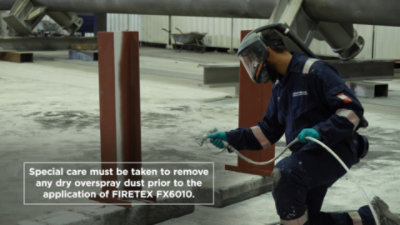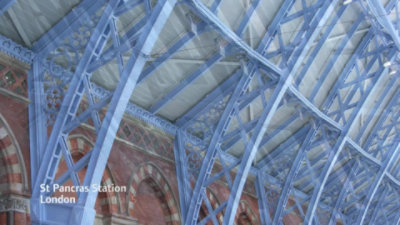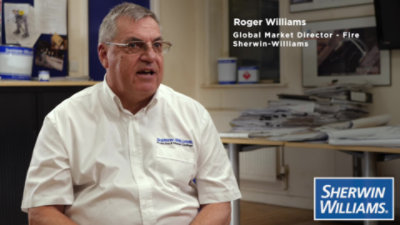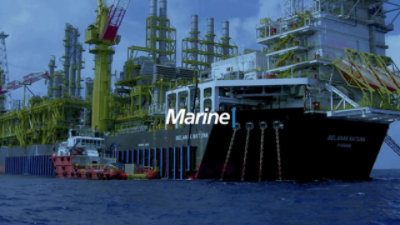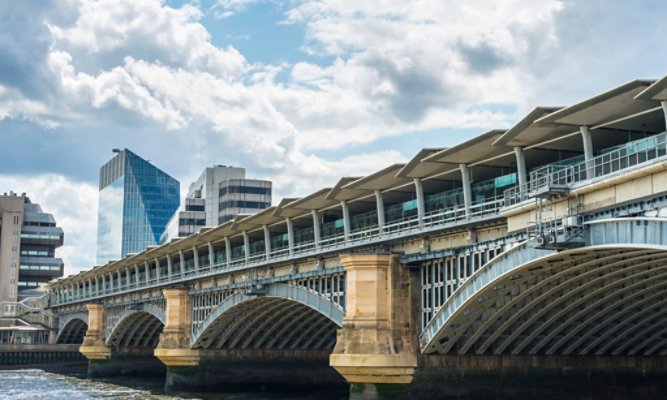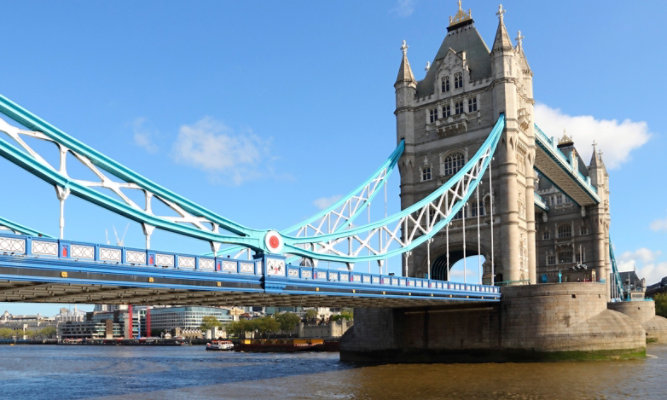
Heated Bridge Decks: Innovation through development and cooperation
Written by Joachim Pflugfelder, Demand Creation Infrastructure - DACH, at Sherwin-Williams Protective & Marine Coatings, and Mario Wettengel, Bauschutz GmbH & CO. KG, Asperg, Deutschland.
Bridge builders often look for alternatives to using road salt in winter, due to its cost and the consequences for the environment, its modes of transport, and structures.
Multi-storey car park ramp surface heating systems, in combination with reactive resin-bonded thin coverings, offer a practical open-air heating system solution, mainly for use on steel and reinforced concrete bridges. Although a detailed life cycle assessment of heated bridge decks is pending, there are many arguments in favour of their use. They utilise renewable energy, and can contribute to the longer service life and year-round unrestricted safety of bridges.
Reactive resin bonded thin decks (RHD) are preferably used on movable bridges (e.g. bascule bridges), fixed bridge equipment, pedestrian bridges and ancillary areas of bridges made of steel. For instance, in Germany only RHD surfaces that have been tested in accordance with TL RHD-ST may be used. They each consist of a primer layer of reactive resins (polyurethane, epoxy resin/polyurethane or polymethyl methacrylate resin) with anti-corrosion pigments and a single or double layer topcoat of reactive resins and aggregates. The top layer is sprinkled with quartz sand, chrome ore slag or corundum to ensure adhesion of the second layer, and to achieve surface properties such as grip and wear resistance.
A pavement thickness of 4 to 6mm is specified for service walkways, footpaths and cycle paths, and 6 to 10mm for surfaces subject to traffic.
Advantages of RHD coatings
Professional and correctly constructed RHD pavements can achieve a service life of more than 20 years without repair work. The use of chrome ore slag and corundum as aggregate and scattering can further extend this service life.
With a maximum thickness of 10mm, a RHD surface can save weight compared to asphalt with a standard thickness of up to 2 x 35mm. Asphalt also flows and deforms at high temperatures. These two factors are particularly important for bascule bridges. The flatter pavement structure and the lower load also allow for more creative and architecturally sophisticated structures. RHD coverings can be finished in colour using coloured bedding or head sealing, which is particularly important for footpath and cycle path bridges. In addition, an appropriate colour scheme has a positive effect on the urban climate in summer because, compared to asphalt, more solar radiation is reflected, and the surface therefore heats up less.
The leap forward in innovation
The planning for the footpath and cycle path bridge in Marquartstein envisaged a reaction resin bonded thin pavement (RHD pavement) on steel. A special requirement was to keep the bridge free of snow and ice even in the winter months, and thus accessible, and passable, all year round without the risk of slipping. They contacted the company STL Heizsysteme GmbH, based in Dresden, Germany, which had already developed various open-space heating systems in the STELO series. The STELO system has been used in multi-storey car park ramps for several years in combination with the special coating solutions from Sherwin-Williams (previously Sika). The robust Elastomastic™ TF wear layer, which is also used in steel construction, was used for this surface heating system. This gave rise to the idea of using the STELO system in a modified form for the first time on a steel bridge structure. STL Heizsysteme GmbH then developed the 1mm thick, heavy-duty, flat heating elements, which can be produced in various shapes and with different performance parameters. Together with specially developed control and regulation technology, a new surface heating system was created based on a tested thin covering which went into operation for the first time in the Marquartstein pilot project in 2012.
Advantages of open-air heating systems for bridges
In addition to damage to vegetation due to use of road salt, high salt levels can impair the stability of the soil structure (siltation) and damage soil organisms. Road salt causes corrosion and steel loss on vehicles and structures, which leads to considerable renovation costs and an overall reduction in their service life. There are also costs for the road salt itself and its application. Open-air heating is an alternative for bridges. It enables automatically controlled and unrestricted safety of use without the need for personnel. Frost damage to the subsoil of the structures and damage to the surface caused by the use of sand or grit are avoided. Of course, the ecological balance must also be assessed here. The use of electricity from renewable energies and geothermal energy has a favourable impact on the project.

The RHD surface of the heated pedestrian and cycle bridge in Marquartstein is completely intact even after a service life of 12 years.
RHD system design of open-space heating systems with heating elements
For a heated RHD coating on a steel bridge deck the following processing steps have proven successful for the systems of the manufacturers STL Heizsysteme GmbH and Sherwin-Williams: The steel surface is first prepared by blasting to the standard preparation level Sa 2½ in accordance with ISO 12944-4. The stripe coating Macropoxy® HM Primer Plus is then applied by single-leg airless spraying or by brushing and rolling. The Elastomastic TFN intermediate coating, an epoxy-polyurethane hybrid liquid plastic, is then applied in a system thickness of at least 4mm. After the specified drying time depending on the temperature, the two-component polyurethane-based STELObond adhesive is applied and the heavy-duty, 1mm-thick STELOpreg heating elements are bonded to it. The sensors are then installed with a sealing sleeve, the electrical connections are made and the gaps are filled. Finally, the Elastomastic TFN insulation topcoat is applied with a system thickness of at least 2mm and sprinkled with chrome ore slag, corundum or quartz sand. In Germany the STELO heating system has passed the continuous swelling bending test in accordance with TL-RHD-ST. This is the most important test that the RHD coating has to undergo, alongside twenty three other tests.
Reference examples
As part of the collaboration between the two partner companies for open-air heating and construction chemicals, six heated bridges with RHD coverings and a total area of 2,007m² have been completed. Most recently is the cycle path concept with its heated bridges in the city of Tübingen - this is described over page.
Tübingen pedestrian and cycle bridge
The city of Tübingen is currently setting new standards in the realisation of its environmentally friendly mobility concept with four heated, 4m wide footpath and cycle path bridges, financed with federal and state funds.
The West, Centre and East cycle bridges close important connection gaps for cyclists, overcoming previous barriers such as the Neckar and Steinlach rivers, and the railway tracks, while also creating a new north-south cycle link. The 1½ km long ‘Blue Belt’ is a central priority cycle route from east to west, linking the bridges to each other and the planned local, high-speed, cycle connections.
The western cycle bridge, including the ramps, is around 378m long. At its highest point, it is 11m high. Construction of the bridge began in April 2022 with completion scheduled for October 2024. For cost reasons, it is made of steel. The RHD surfacing and the integrated surface heating were produced using the same systems as the pedestrian and cycle bridge in Marquartstein. Eight heating elements are connected to each of the 82 heating circuits in the west wheel bridge. To ensure the heating elements could be installed across the entire surface of the curved bridge panel, each had to be customised with an individual geometry. To continue the Blue Belt design, the optional Acrolon® EG-5 acrylic polyurethane head sealant in RAL 5015 blue was then applied.
If there is a risk of frost and corresponding humidity, the sensors react and start the heating process. As soon as the humidity sensors signal dryness—even at sub-zero temperatures—the heating switches off automatically. This means that neither black ice nor thawing snow can form on the bridge.
The STELO system on the steel bridge has other advantages in addition to the safety aspect. With a total power requirement of 228kW, this solution is extremely energy-efficient, as the control system only reacts to the reference temperatures from the road surface and the heating only switches on when additional moisture is present. According to Mayor Boris Palmer, defrosting therefore hardly costs any electricity, 70% of which comes from renewable energies in Tübingen. By heating the bridge instead of using road salt, the city council expect it to have a significantly longer service life, up to 50%, with acceptable installation and maintenance costs. According to the mayor, the heated cycle bridges in Tübingen cool down the city - the reason lies in the blue road surface. The manufacturer, who was involved in the central and eastern wheel bridges, states that a traditional black asphalt surface only reflects 10% of the sun’s rays. The remaining 90% is converted into heat and thus heats the surfaces and the environment. On a warm summer’s day, this can be up to 900W/m2. According to the manufacturer, measurements in Tübingen showed a surface temperature of 52.5°C on the normal road. The blue colour, on the other hand, reflected 31% of the sun’s rays and the surface temperature was 38.2°C.
Discover More
Industry Expertise and Innovation
Explore customised solutions we deliver for customers to address their project and application challenges.



